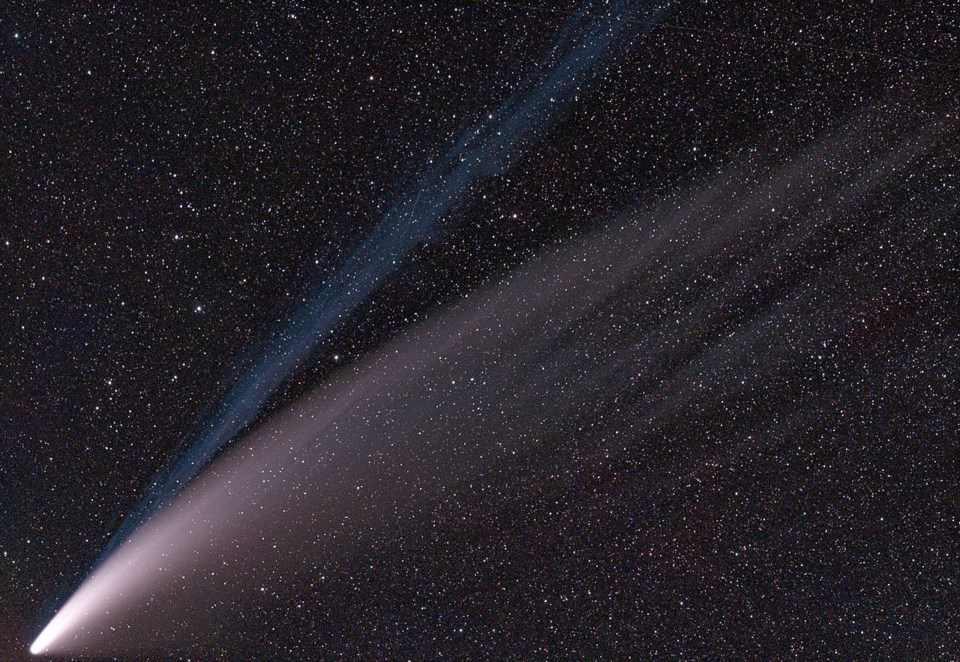I hope everyone enjoyed their astronomy events this summer; July and August were genuine highlights. Comet NEOWISE was a very rare treat and the Perseids were nice, not great but neat nonetheless. September looks to be more low key.
The Astronomy Picture of the Day site (APOD) at https://apod.nasa.gov/apod/ has a couple of photos of the Perseid meteors posted Aug. 10 and 17. Both are full-sky pictures that clearly show the tracks radiating from the constellation Perseus. This year was not as good as some years I’ve seen but it’s still neat to see. Yes, it is nice to have an atmosphere overhead for many reasons.
Most of the action this September will be planetary with some interesting close passes by the Moon. Mercury is coming out from behind the Sun and will be at its most easterly on Oct. 1. Unfortunately, at this time of year its position on the ecliptic puts it too far south for us – it sets very soon after the Sun. Great if you’re in Brisbane or Cape Town; here, not so much. Venus is high in the eastern sky by sunrise because it’s west of the Sun and therefore to the north. The Moon will pass 4 degrees to its north on the morning of Sept. 14.
Looking outward, Mars is on its way to a very close approach Oct. 6. We’re catching it rapidly and it will brighten from -1.8 to -2.4 in September, about as bright as Jupiter. There will also be a close pass by the Moon on the evening of Sept. 5; at 10 p.m. local time. Mars will be about 1 degree to the northwest of the Moon – about two lunar diameters.
As in August, Jupiter and Saturn are low in the southeast after sunset; they were at opposition in late July and are still big and bright. If you have 10 power binoculars they will show Jupiter’s four big moons if you can steady the binoculars well enough. You can likely get a tripod mount that will fit many models. For anyone not able or willing to spend money on equipment the next best thing might be some free software titled Stellarium. It is a free download that runs on Windows and Mac systems. Anyway, it’s basically a planetarium for your computer. It’s big – 250 MB or so – and there is a learning curve to it but, hey, it’s free. I’ve spent many hours on it and am still a duffer but loving it. Download, select your location and dive in!
Remember, all of the movements of moon and planets described can be checked out on the web at: www.heavens-above.com. The next regular meeting of the Astronomy Club should be Sept. 11 at 7 p.m. using Zoom. Information on the speaker and topic and how to register for the meeting will be on the club website at https://sunshinecoastastronomy.wordpress.com/ the week of the meeting.



